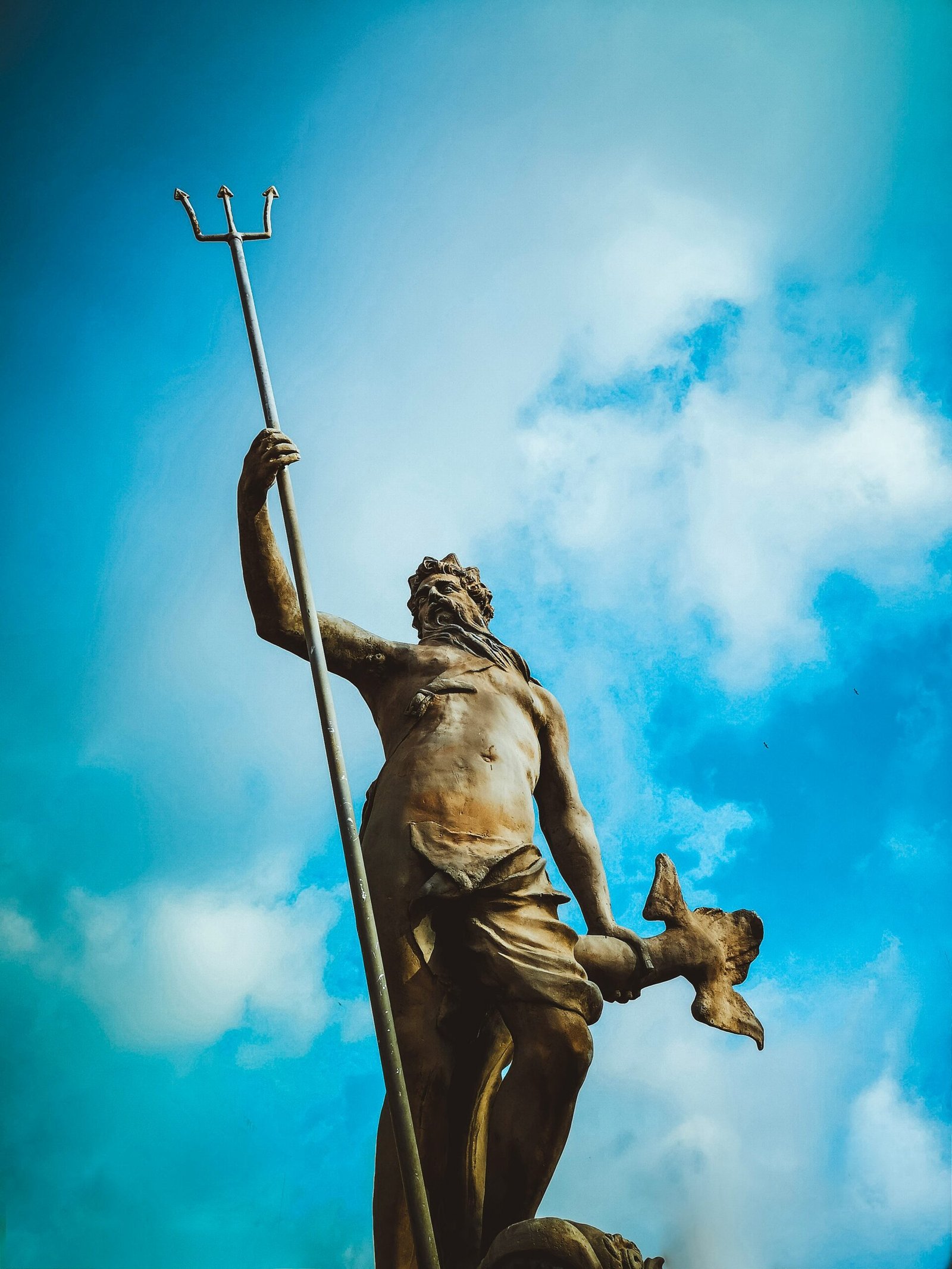Introduction to Sound in Spellcasting
Throughout history, music and sound have played a pivotal role in spiritual and mystical practices, including spellcasting. The use of sound in these rituals is not merely aesthetic; it is deeply embedded in the belief that sound vibrations can influence energy and intention. Various cultures across the globe have harnessed the power of sound to enhance their spiritual endeavors, weaving sonic elements into their rituals to summon, direct, or transform energy.
In ancient civilizations, such as those of Egypt, Greece, and Mesopotamia, the use of sound was integral to religious ceremonies and magical rites. The Egyptians, for example, employed specific chants and melodies in their temple rituals, believing that these sounds could invoke the presence of deities and potentiate their spells. Similarly, the Greeks used hymns and incantations to invoke divine favor and protection, while the Mesopotamians incorporated musical instruments like lyres and drums into their sacred practices.
Indigenous cultures also hold a profound reverence for the sonic dimension of their rituals. Native American tribes utilize drums, rattles, and flutes to connect with the spiritual realm, with each instrument carrying its own symbolic meaning and purpose. The rhythmic beat of the drum, for instance, is often seen as a heartbeat that aligns the participants with the Earth’s natural rhythms, facilitating a deeper state of consciousness and spiritual connection.
In Eastern traditions, the use of sound in spellcasting is equally significant. Tibetan Buddhism, for instance, employs singing bowls and chanting to create harmonic vibrations that are believed to purify the mind and environment, aiding in meditation and spiritual healing. Hinduism, too, integrates mantras and sacred sounds, such as the chanting of “Om,” which is thought to be the sound of the universe and a powerful tool for manifesting intentions.
These diverse practices underscore the universal recognition of sound as a potent force in spiritual and magical traditions. The underlying belief is that sound vibrations can alter the energetic landscape, making it a valuable tool for those seeking to shape their reality through spellcasting. As we delve deeper into the specific instruments and techniques used, it becomes evident that the harmonious integration of sound is both an art and a science in the realm of the mystical.
The Science Behind Sound and Energy
Understanding the science behind sound and energy provides a foundational basis for exploring their roles in spellcasting. Sound waves, essentially vibrations traveling through a medium such as air, have profound effects on both the human brain and body. These waves interact with energy fields, influencing our physiological and psychological states.
One key concept in this interaction is resonance. Resonance occurs when the frequency of a sound wave matches the natural frequency of an object or energy field, amplifying the effect. This principle is evident in various studies. For instance, research has shown that specific frequencies can alter brain wave patterns, inducing states of relaxation or heightened awareness. This alteration is crucial in spellcasting, as the caster often aims to achieve a particular mental state conducive to focusing intent and energy.
Frequency, measured in Hertz (Hz), is another critical element. Different frequencies can produce varying effects on the body and mind. For example, the frequency of 528 Hz, often referred to as the “love frequency,” has been documented to promote healing and DNA repair. In the context of spellcasting, practitioners might use specific frequencies to align their energy with their desired outcome.
Vibration, the movement caused by sound waves, also plays a significant role. Vibrations can affect the physical body, as demonstrated by studies on the therapeutic use of sound vibrations in treating conditions such as anxiety and chronic pain. Singing bowls, for example, produce vibrations that can create a meditative state, facilitating a deeper connection with one’s energy field and intentions during spellcasting.
These scientific principles—resonance, frequency, and vibration—illuminate how sound can be harnessed to influence energy fields. By understanding and applying these concepts, practitioners can enhance the efficacy of their spellcasting, utilizing sound not just as a tool, but as a bridge between the physical and the metaphysical realms.
Types of Instruments Used in Spellcasting
Spellcasting often incorporates a variety of musical instruments, each contributing unique properties and sounds that are believed to influence energy and intention in distinct ways. Among the most commonly utilized instruments are drums, singing bowls, bells, rattles, and tuning forks. Understanding the characteristics and uses of these instruments can enhance one’s spellcasting practice.
Drums are perhaps the most primal and widely used instruments in spellcasting. The rhythmic beats produced by drums are thought to synchronize with the natural rhythms of the Earth and the human body, creating a trance-like state that facilitates deeper meditation and a more potent connection to spiritual energies. The steady, grounding sound of the drum can help in focusing the mind and channeling energy towards specific intentions.
Singing bowls, often made of metal or crystal, produce a soothing, resonant tone when struck or circled with a mallet. These instruments are renowned for their ability to produce harmonic overtones, which are believed to stimulate and balance energy centers within the body, known as chakras. The calming vibrations of singing bowls are used to clear negative energy and enhance the overall flow of positive energy during spellcasting rituals.
Bells serve a dual purpose in spellcasting. The clear, penetrating sound of a bell is used to signal the beginning and end of a ritual, helping to establish a sacred space. Additionally, bells are believed to dispel negative energies and attract beneficial spirits, enhancing the overall efficacy of the spell. Their crisp tones can heighten awareness and focus, aiding in the manifestation of intentions.
Rattles are often used to break up stagnant energy and promote movement within a ritual space. The sharp, irregular sounds produced by rattles can help to disrupt and disperse negative influences, making way for positive energy to take hold. This instrument is particularly effective in shamanic practices, where it is used to journey between worlds and communicate with spiritual entities.
Tuning forks are precise instruments that generate specific frequencies when struck. These frequencies can be used to attune to particular energies or intentions, making tuning forks a powerful tool for aligning one’s personal vibration with the desired outcome of a spell. The clear, sustained tones of tuning forks are also used in sound healing practices to restore balance and harmony within the body and mind.
Each of these instruments brings its own unique qualities to the practice of spellcasting, offering practitioners a diverse toolkit to enhance their rituals and achieve their desired results.
Drums: The Heartbeat of Rituals
In many shamanic and indigenous traditions, drums play a pivotal role in spellcasting and ritual practices. Often referred to as the “heartbeat” of rituals, drums have a profound ability to alter consciousness and create a trance state, facilitating deeper spiritual experiences. The rhythmic beat of a drum can ground energy, allowing practitioners to connect more deeply with the earth and their inner selves.
Drumming patterns are not arbitrary; they are meticulously crafted to invoke specific energies or deities. For instance, in shamanic traditions, a steady, monotonous beat is commonly used to lead participants into a meditative state. This trance-like state is essential for journeying into non-ordinary realities, where shamans seek guidance, healing, and wisdom. The repetitive rhythm helps to synchronize the brainwaves, transitioning from the beta waves of normal waking consciousness to the theta waves of deep meditation and intuitive insight.
Different cultures have their own distinct drumming styles and patterns. For example, the Native American frame drum, often played with a mallet, is used in ceremonies to call upon the spirits of ancestors and nature. The African djembe, known for its versatile tones, is used in various rituals to communicate with the spiritual world and to celebrate community and life events. In Siberian shamanism, the drum is considered a sacred tool, a vehicle for the shaman’s soul to travel to the spirit world.
The drum’s ability to invoke deities is also well-documented. In certain traditions, specific drumming patterns are associated with particular gods or goddesses. For example, in Haitian Vodou, the rada drums are played in honor of the lwa, or spirits, each with its own unique rhythm and song. These rhythmic invocations are believed to summon the deities, inviting them to participate in the ritual and offer their blessings.
Overall, the drum’s role in spellcasting is multifaceted. It serves not only as a powerful tool for altering consciousness and grounding energy but also as a means of connecting with the divine and invoking specific spiritual entities. Its rhythmic heartbeat resonates deeply within the human psyche, making it an indispensable element of many magical traditions.
Singing Bowls: Harmonizing Vibrations
The use of singing bowls in spellcasting and meditation has a rich history rooted in ancient traditions, particularly within Tibetan and Himalayan cultures. These instruments, often crafted from a variety of metals or crystal, produce resonant tones that are believed to have profound spiritual and healing properties. Singing bowls are classified primarily into two types: Tibetan singing bowls, which are traditionally made of a metal alloy, and crystal singing bowls, which are formed from pure quartz crystals. Each type has distinct characteristics and applications in spiritual practices.
Tibetan singing bowls are known for their deep, multi-layered sounds that can vary depending on the metal composition and size of the bowl. These bowls are typically used in meditation practices to induce a state of deep relaxation and to clear the mind of distractions. The rich, resonant tones are thought to help align the chakras, or energy centers, within the body, promoting a sense of balance and harmony. In spellcasting, the vibrations from Tibetan singing bowls are believed to enhance the practitioner’s focus and intention, making their spells more potent and effective.
Crystal singing bowls, on the other hand, produce a purer, more sustained tone that is often associated with specific chakras. The clarity and precision of these sounds are believed to facilitate a deeper connection to the spiritual realm. Practitioners often use crystal singing bowls during rituals to cleanse spaces, raise vibrations, and amplify the energy of their intentions. The harmonizing frequencies can help to align the practitioner’s energy with their desired outcomes, making their spellcasting efforts more powerful and precise.
The sound produced by singing bowls is not merely for auditory pleasure; it is a tool for spiritual enhancement. The vibrations created by these bowls are believed to penetrate deep into the practitioner’s being, promoting a sense of peace, clarity, and heightened spiritual awareness. Whether used in meditation or spellcasting, singing bowls serve as a bridge between the physical and spiritual worlds, assisting practitioners in achieving a more focused and harmonious state of being.
Voice and Chanting in Spellcasting
The human voice has long been revered in spellcasting for its inherent power to invoke change, raise energy, and set intentions. Chanting, toning, and singing are common vocal techniques used by practitioners to harness this power. The act of vocalization in spellcasting is not merely about making sound; it is a deliberate practice aimed at connecting with spiritual entities and aligning one’s energy with the desired outcome.
Chanting is a repetitive vocalization of specific words or phrases that hold spiritual significance. These chants can be derived from ancient texts, sacred languages, or personalized mantras. The repetition creates a rhythmic pattern that helps to focus the mind and elevate the practitioner’s vibrational frequency, thereby facilitating a deeper connection with the spiritual realm. For instance, in Wiccan traditions, the “Eko Eko Azarak” chant is often used to invoke deities and raise the energy for a ritual.
Toning, on the other hand, involves producing sustained vowel sounds to create a resonance within the body and the surrounding space. This practice is believed to clear energy blockages and harmonize the practitioner’s internal vibrations with those of the universe. Toning can be as simple as intoning the sound “Om” or more complex sequences tailored to specific spellcasting purposes.
Singing in spellcasting can range from simple melodies to elaborate songs, each designed to invoke specific energies or deities. In many traditions, songs are used to honor the elements, call upon protective spirits, or celebrate seasonal changes. For example, in the Celtic tradition, the Awen chant, which consists of three syllables sung in a flowing sequence, is used to invoke inspiration and divine guidance.
Incorporating the human voice into spellcasting rituals not only enhances the practitioner’s focus but also serves as a powerful tool for manifesting intentions. Whether through chanting, toning, or singing, the voice acts as a bridge between the physical and spiritual worlds, amplifying the energy and intentions behind each spell.
Creating a Sonic Spellcasting Space
When setting up a space for sound-based spellcasting, the importance of acoustics cannot be overstated. The quality of sound within your environment will greatly influence the efficacy of your rituals. Begin by selecting a room or area that naturally enhances sound, such as spaces with minimal external noise and good reflective surfaces. Wooden floors and walls, for example, can amplify sound, while carpets and heavy drapes may muffle it. A balanced acoustic environment ensures that the vibrations produced by your instruments are clear and resonant.
Choosing the right instruments is key to creating an effective sonic spellcasting space. Drums, singing bowls, tuning forks, and chimes each offer unique vibrational qualities that can enhance different aspects of your practice. Drums, with their deep, grounding beats, are ideal for invoking primal energies and creating rhythmic patterns that can lead to trance states. Singing bowls, on the other hand, produce harmonics that can elevate the mind and spirit, making them perfect for meditative and healing rituals. Experiment with different instruments to discover which ones resonate with your specific intentions and energies.
Creating a conducive environment for sound rituals involves more than just acoustics and instruments. Consider the overall ambiance of your space. Lighting, for instance, can greatly influence the mood and energy of your spellcasting. Soft, dim lighting or candlelight can create a calming atmosphere, while brighter lights may be more suitable for energetic and dynamic rituals. Additionally, incorporating elements such as crystals, incense, and sacred symbols can enhance the spiritual resonance of your space.
For beginners looking to incorporate sound into their spellcasting practices, start simple. Begin with a single instrument, like a singing bowl or drum, and focus on understanding its sound and vibration. Pay attention to how the sound affects your energy and state of mind. Gradually, you can introduce more instruments and complex sound patterns into your rituals. Remember, the effectiveness of sound in spellcasting lies in its ability to resonate with your intentions and energies, so take your time to explore and find what works best for you.
Personal Experiences and Testimonials
Practitioners from various traditions have long recognized the profound impact music and sound can have on spellcasting. Many have shared their personal experiences, illustrating how these elements can enhance their rituals and manifest their intentions more effectively. For instance, Sarah, a seasoned Wiccan, recounts how the rhythmic beating of drums during her spellcasting sessions significantly improves her focus. She describes it as a “heartbeat of the earth” that grounds her and keeps her centered, allowing her to channel her energy more precisely.
Similarly, David, a practitioner of Shamanism, emphasizes the transformative power of singing bowls. He explains how the resonant tones of the bowls help him achieve deeper meditative states, which are essential for connecting with the spiritual realm. According to David, the vibrations from the singing bowls align with his energy, creating a harmonious environment that facilitates clearer communication with his spirit guides.
Another compelling testimonial comes from Jasmine, who integrates various musical instruments into her spellcasting practice. She highlights the use of chimes and bells, noting that their delicate sounds act as a conduit for her intentions, sending them out into the universe with greater clarity. Jasmine has found that these sounds not only enhance her spells but also bring a sense of tranquility and peace to her ritual space.
These personal experiences underscore the versatility and potency of incorporating music and sound into spellcasting. Whether through the grounding rhythm of drums, the meditative tones of singing bowls, or the ethereal chimes of bells, practitioners have discovered unique ways to elevate their magical practices. Such testimonials encourage others to experiment and find the sounds that resonate most with them, ultimately enhancing their own spellcasting experiences.



